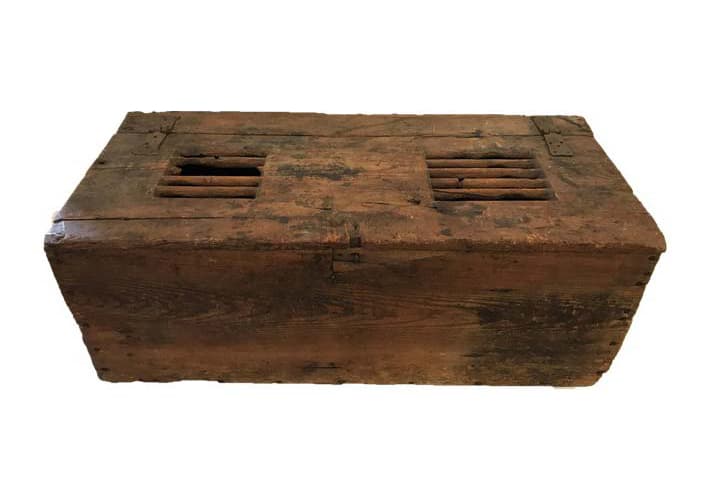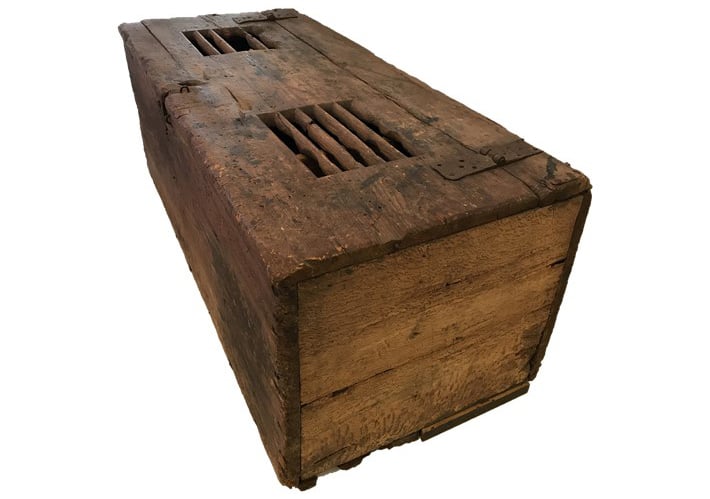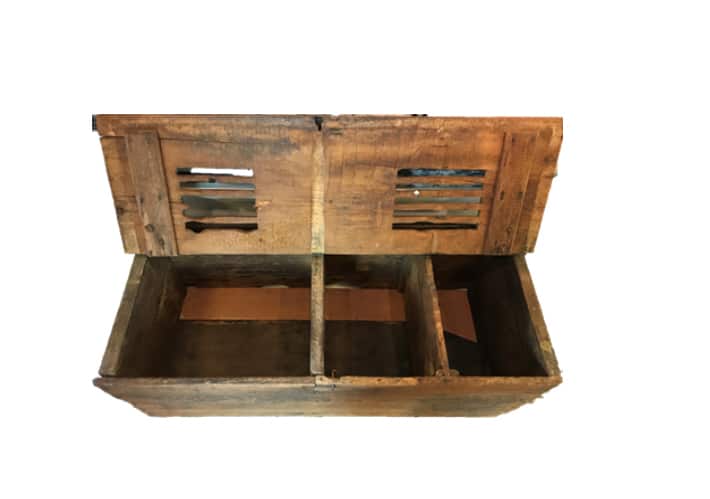COLLECTION HIGHLIGHT
Grain Chest
Grain Chest c.1650 – 1720
Gift of the Clapp Family, 1922
Oak, pine
Dims: H 23 ¾” x W 60” x D 26”
This chest is descended in the Stedman, Russell, Stockbridge, and Clapp families of Scituate – the successive owners of the Mill on First Herring Brook in Greenbush. The Mill, commonly known as the Stockbridge Grist Mill, was built c.1640 and is today owned and maintained by the Scituate Historical Society.
The grain chest is constructed of 6 boards, 2 inch oak planks and 1 ¼ inch pine board, held together with large wrought-iron spikes. The lid is mounted on heavy wrought-iron butterfly hinges. The interior is divided into three compartments and there are ventilation slots cut in the lid. Although the form and its construction are not complex, the chest has been executed with precision, as evidenced by the tight fit of the lid. It originally would have had smooth planed surfaces for cleanliness.
This chest was part of the exhibition New England Begins: The Seventeenth Century at the Museum of Fine Arts in Boston in 1982. The MFA’s curator for the exhibition oversaw repairs and fumigation of the chest at that time.
In 2019 the chest was conserved by Rika Smith McNally & Associates with Community Preservation Act funds generously granted by the town of Scituate. Treatment included dusting, vacuuming, and frass removal with small brushes on the exterior and interior of the chest. Unstable and spongy wood was stabilized and imbedded dirt removed with sponges. The chest is on view at The Schoolhouse.
Curriculum Connections
This Scituate Historical Society Collections Highlight connects with the following Massachusetts State Curriculum Frameworks:
History and Social Science Framework
1.T4, 2.T5 Economics: resources and choices
Explain the relationship between natural resources and industries and jobs in a particular location (e.g., fishing, shipbuilding, farming, trading, mining, lumbering, manufacturing).
3.T1 Massachusetts Cities and Towns Today and in History
Research the demographic origins of the town or city (e.g., the Native People who originally lived there or still live there, the people who established it as a colonial town, its founding date, and the free, indentured, and enslaved women and men who contributed to the wellbeing of the town).



